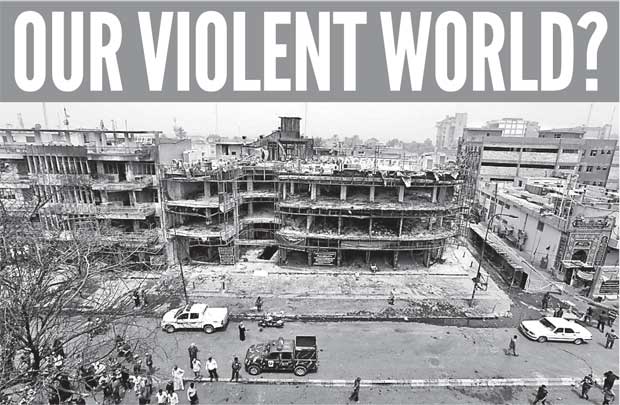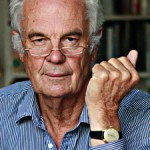
 By Jonathan Power
By Jonathan PowerJuly 24th 2017
The most peaceful countries in the world are Iceland, Portugal, Austria, New Zealand and Denmark, according to the new Global Peace Index, in a new 136-page report, published by the Institute for Economics and Peace in Sydney, Australia. The most violent are Afghanistan, Iraq, Syria, Yemen and South Sudan.
Seen from a spaceship the most violent ones appear more or less clustered in a corner of the earth. It’s not that the rest of the globe is at peace but even where there is fighting there is not the wholesale destruction of cities that we see every day on TV, as, for example, when the cameras follow the multi-sided civil war in Syria. Indeed, violence away from these five countries is localised. Nowhere else does it consume whole societies.
The fickle eye of television needs to show more peace and less conflict if it is to project a balanced picture.
There is spasmodic fighting in the Congo, Mali, Nigeria and Somalia in Africa. In Asia there are the Muslim rebellions in Kashmir, southern Thailand, the Philippines and Myanmar. Israel and the Palestinians may appear to edge to the brink of war from time to time but the heavy violence when it comes dissipates these days after a week or two.
There is no permanent Intifada which at one time looked likely. In the Americas, both north and south, and the Caribbean there is no widespread fighting to speak of. There is the appalling gang violence in El Salvador, the astronomical murder rate in Honduras and, alongside the truce, still some pockets of guerrilla fighting in Colombia. Overall, South America is the most improved part of the world.
In the US the murder rate and organised criminality is unacceptably high, even though in most big cities – Chicago is the biggest exception – the murder rate has declined over the last decade, probably because of better policing and the spread over the last 30 years in the availability of abortions to poor women who don’t have the wherewithal or the stable family life to bring up their sons to be non-violent.
The European Union is the most peaceful region in the world, although there are countries – Poland is the worst – where the intensity of organised internal conflict and the likelihood of violent demonstrations suggest the danger of a falling-back.
This grand peace has a lot to do with the profound desire to avoid another world war.
During the twentieth century Europe was the most violent part of the world – not surprising since war has been practiced over the millennia, more than any other part of the world.
The other factor that gives peace such deep foundations is the European Union. It was ex British Prime Minister David Cameron who warned during the foolish Brexit campaign that a “leave” vote might lead to war in Europe again. This may be overstating it but it wasn’t as ridiculous an observation as many have made out.
The world over there is a lessening in political terror – such things as extra-judicial killings, imprisonment without trial and torture – except in parts of Sub-Saharan Africa, North Africa and the Middle East.
Last year deaths from terrorism decreased by 10%. This is the most important trend of all, one that has been almost totally ignored by the world’s media, although in fairness where terrorism has increased it is in the parts of the world with the most powerful and far-reaching media – Europe and North America – which inevitably focus on the terrorism at home.
Still, as is wittily but truthfully said, the locals are more likely to be killed by falling off a ladder or babies drowning in the bath than by a terrorist attack. Deaths caused by terrorism in Western countries account for less than 2% of all deaths from terrorism worldwide.
In most of the world violent crime has decreased, as has the number of homicides. Military expenditure as a percentage of national income has gone down. In the US, under President Barack Obama, US military operations abroad were significantly wound down.
South America is the continent that in recent years has exhibited the most positive changes.
Argentina, Peru, Paraguay and Guyana have led the way. Eight of the eleven countries in South America have improved their levels of peace. In contrast, in Africa political instability, after years of improvement, has got worse. In Asia, Sri Lanka, India and Pakistan, the latter long riven by the violence of Muslim extremists, have improved their level of peacefulness.
In sum, if one excludes the Middle East, South Sudan and Afghanistan, the world is as peaceful as it was a decade ago. The Cassandras have it wrong. We are not living in the best of times – that was the period immediately following on the end of the Cold War. But we are certainly a long, long, way from the worst of times.
© Jonathan Power 2017

